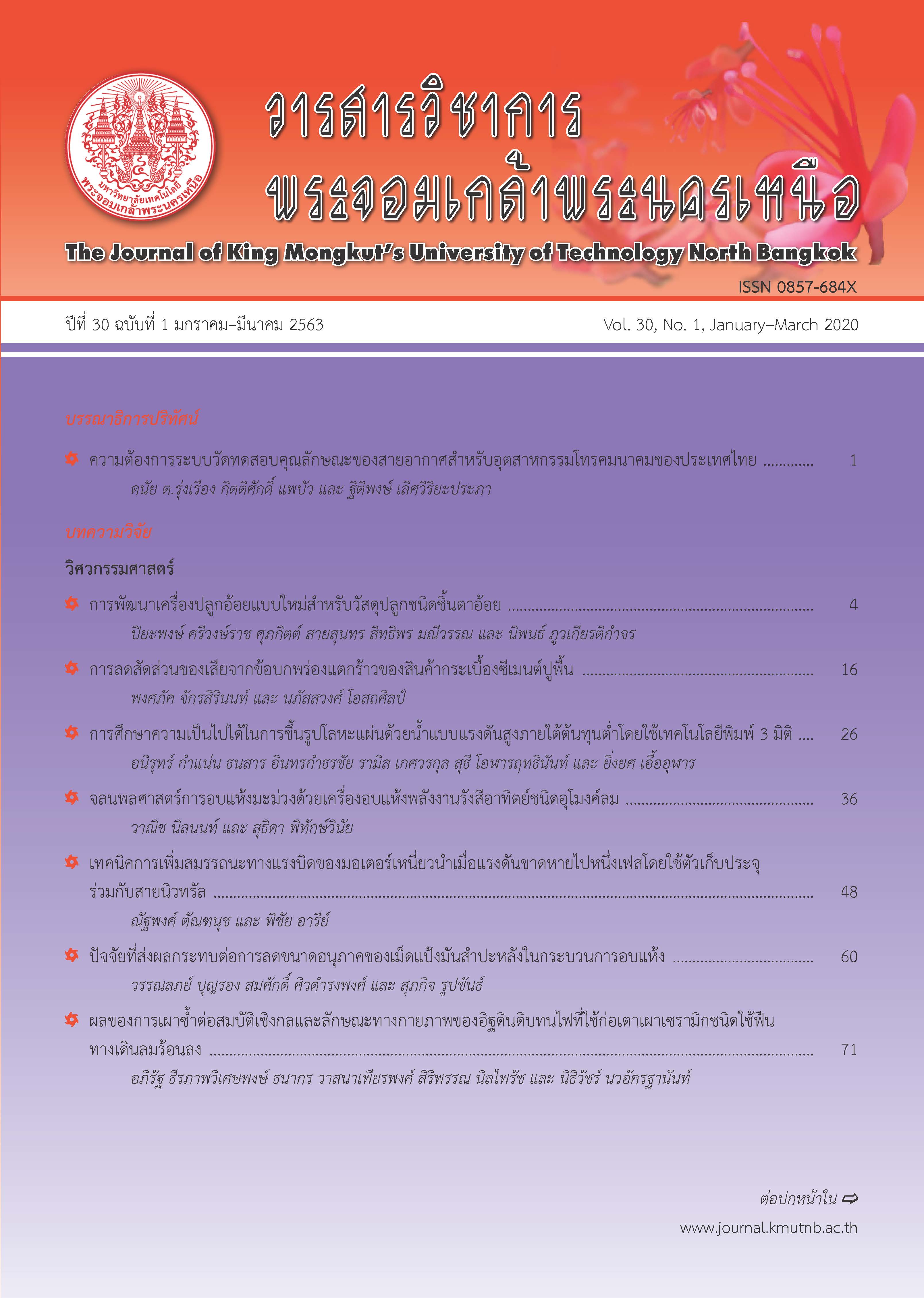Business Development Model for Metal Parts Manufacturing for the Aerospace Industry
Main Article Content
Abstract
The research’s purposes aimed to study the important context of metal part manufacturers in the aerospace industry, including important capability and development topics, leading to produce model and the manual for business development of Metal Parts Manufacturing for the Aerospace Industry. According to the mixed model research, the methodology included in-depth interview for 8 experts from aerospace industrial business, application of Delphi questionnaire for 18 experts from the development of aerospace industrial business and focus group discussion for 13 experts from automotive industrial business. The statistical techniques applied included median, inter-quartiles range. The research’s findings showed that the component of business development model for metal parts manufacturing for the aerospace Industry comprised of business environment, internal organization context, capability needed for aerospace industrial business entrepreneurs regarding knowledge, skill and attribute, leading to the business development model for aerospace industry. The development manual is produced including the steps of planning, evaluating and developing.
Article Details
The articles published are the opinion of the author only. The author is responsible for any legal consequences. That may arise from that article.
References
[2] Office of the National Economic and Social Development Board, “Document for the 2015 annual meeting of the NESDB. The national economic and social development plan No. 12 (2017–2021),” Office of the National Economic and Social Development Council, Bangkok, 2015 (in Thai).
[3] Office of the National Economic and Social Development Board, “The twelfth national economic and social development plan, 2017 – 2021,” Office of the National Economic and Social Development Council, Bangkok, 2015 (in Thai).
[4] The Board of Investment of Thailand, “Thailand’s automotive industry the next generation,” The Board of Investment of Thailand, Bangkok, 2015 (in Thai).
[5] W. Yongpisarnphob, “Business/Industry trends, 2018–2020 automotive industry,” Krungsri Research, Bangkok, 2018 (in Thai).
[6] Thailand Board of Investment, “Industrial estate for aerospace, the important step to be the regional hub of aerospace,” Investment Promotion Journal, vol. 25, no. 5, pp. 11–18, 2015 (in Thai).
[7] K. Gopalakrishnan, Y. Y. Yusuf, A. Musa, T. Abubakar, and H. M. Ambursa, “Sustainable supply chain management: A case study of British aerospace,” International Journal of Production Economics, vol. 140, no. 1, pp. 193–203, 2012.
[8] F. Mas, R. Arista, M. Oliva, B. Hiebert, I. Gilkerson, and J. Riosc, “A review of PLM impact on US and EU aerospace industry,” Procedia Engineering, vol. 132, pp. 1053–1060, 2015.
[9] G. R. Waissi, J. E. Humble, and M. Demir, “Competitiveness of small and medium enterprises of the Arizona aerospace and defense supply chain,” Journal of Logistics Management, vol. 2, no. 1, pp. 15–25, 2013.
[10] C. Rebolledo and J. Nollet, “Learning from suppliers in the aerospace industry,” International Journal of Production Economics, vol. 129, no. 2, pp. 328–337, 2011.
[11] V. Crute, A. Wickham, R. Johns, and A. Graves, “Exploring competitive advantage through lean implementation in the aerospace supply chain,” International Federation for Information Processing, vol. 257, pp. 357–364, 2008.
[12] I. Dostaler, “Competing in the global aerospace supply chain: The case of the Canadian aerospace industry,” Operation Management Research, vol. 6, no. 2, pp. 32–43, 2013.
[13] M. Emiliani, “Sourcing in the global aerospace supply chain using online reverse auctions,” Industrial Marketing Management, vol. 33, no. 1, pp. 65–72, 2004.
[14] A. A. F. Alshaher, “The McKinsey 7S model framework for e-learning system readiness assessment,” International Journal of Advances in Engineering & Technology, vol. 6, no. 5, pp. 1948–1966, 2013.
[15] M. M. Ravanfar, “Analyzing organizational structure based on 7s model of McKinsey,” Global Journal of Management and Business Research, vol. 5, no. 10-A, pp. 43–55, 2015.

